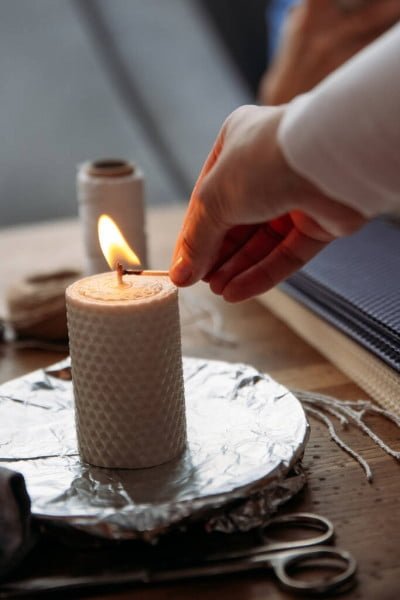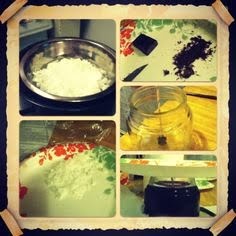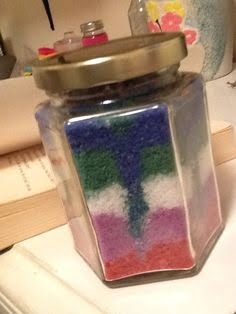Introduction
Organic candle making is a movement that has been gaining momentum among eco-conscious consumers. By choosing to use all natural, organic materials, we can reduce our reliance on petrochemicals and petroleum-based additives found in conventional candles. Organic candles are made with soy wax and beeswax, blended essential oils and cotton wicks, so you can rest assured knowing your candle is safe for your home environment.
When making organic candles rather than traditional paraffin-based products, the user enjoys numerous benefits. For instance, organic waxes tend to clean up easily with just soap and water rather than specialized cleaners. They also burn slower and cooler than traditional waxes, resulting in greater cost savings for the consumer. In addition to this, organic candles will emit less smoke when burning compared to their traditional counterparts. This helps maintain air quality indoors as well as outdoors by limiting volatile compounds from entering into the atmosphere or lungs of those who may be sensitive or allergic to certain smoke particles. And finally, most noteworthy of all is their environmental advantage; producing no greenhouse gasses or dangerous toxins when burned or made into new products. Therefore when you buy an organic candle not only are you supporting sustainable agriculture but helping reduce toxins released into our delicate atmosphere as well!
Essential Component Overview
Organic candle making is a great way to create beautiful, handcrafted pieces that not only look great, but also help us to reduce our environmental footprint. The most commonly used components to create organic candles are typically beeswax and soy wax for the base of the candle, natural essential oils and herbs or flowers for fragrances, palm or coconut oil as a fuel source and a lead-free cotton wick. The difference between natural and non-natural ingredients is that the former are those which are derived from plants or other natural sources and the latter are ingredients which have been synthetically manufactured.
The effects of these ingredients on the environment depend upon the origin of each particular element and how sustainably it is sourced. In general, however, certain types of toxins can be released into the air when burning candles made with non-natural ingredients. On the other hand, more natural ingredients tend to be friendlier to both the environment and human health because they do not release any toxins while being burned. Burning any type of candle should ideally be done in an area with good ventilation in order to minimise potential risks associated with toxic fumes; however this is especially important when using non-natural candles which may contain synthetic fragrances.
Tips & Tricks
Scent-Blending for Organic Candles: Strictly organic ingredients can be combined with simple aromatics such as citrus and spice, to create exquisite scent combinations. Experimentation allows you to perfect your scent blend. Carrier oils can be used to reduce the strength of the essential oils. Coconut oil, jojoba oil and grapeseed oil are all good candidates for this. Taking careful notes on what you’re combining and in what amounts is key so that you can repeat the same scent blend later or tweak it if needed.
Selecting Essential Oils: Essential oils are extracted from plants through steam distillation or mechanical pressure, which also helps concentrate their active compounds. Make sure you buy only organic certified essential oils to guarantee their high quality standards. To create your own unique fragrance, combine two or more essential oils in different concentrations depending on the intensity of aroma desired.
Wicks & Containers: Selecting the right type of wick will influence the way a candle burns; therefore, it is important to choose a wick that will burn well with an organic candle wax formula, ensure even burning and prevent a “mushrooming effect” (the tendency of carbon build up at the end of each burning once extinguished). As far as containers go, choose one designed specifically for candle making – glass containers heat up slowly, retaining heat in order to maximize scent throw and promote longer burning time. Natural fibers such as cotton or hemp wicks also provide excellent performance with organic candles.
Popular Organic Candle Making Brands
The importance of acknowledging established and renowned candle-making brands is essential in reassuring customers of the quality and safety of their products. Many popular organic candle-making brands have considerable reputations that have been built through consistent product innovation, customer experience, and ethical business practices. Choosing an established brand over a new or less known producer is highly recommended for reasons such as: guarantee of safe burning candles, assurance that the ingredients used are free from toxins and synthetic fragrances, and confidence in dealing with a brand that understands the customer’s needs.
Using organic ingredients can significantly benefit the environment as well as one’s health. For example, plant-based waxes such as soy and beeswax are biodegradable which means they do not emit dangerous fumes like paraffin wax does when burned. Moreover, many manufacturers replace synthetic fragrances (that can trigger skin irritations) for more natural sources such as essential oils. Thus, opting for organic elements should be considered if one wishes to create an environmentally friendly and ecologically safe product.
Popular organic candle-making brands include: Yankee Candle Company ” they provide superior quality products that use essential oils in their fragrances; NaturAura ” promotes sustainable living by using only all-natural soybean or coconut blended wax with essential oils; More? Meraki & Co ” offers 100% vegan options without any harsh chemicals along with ecofriendly packaging made from recycled paper; WoodWick Candles ” determined to produce high-end natural candles; Red Glass Co ” artisans hand pour toxin free candles made with pure vegetable waxes enriched with aromas sourced from local plants; Norma Jean Candle Company ” incorporate flowers and herbs as decorations for their rich smelling candles leaving no chemical residue after burning them. All these companies go above and beyond to create unique products while committing to ethical business practices.
Spending Mindfully & Making Sustainable Choices
Organic candle making is a sustainable method of production. Such candles are created with all-natural ingredients, like soy wax and essential oils, that have been cultivated organically without the use of synthetic chemicals, toxins, or genetically modified organisms (GMOs). The cost difference between organic and non-organic candle making largely lies in the materials used. Organic ingredients tend to be more expensive than their synthetic alternatives due to the nature of their quality control and production process. Sustainable candle making also involves using biodegradable packaging and containers, which can further increase costs but also contribute to the economic benefits associated with this type of product.
The economic benefits for those utilizing sustainable products come in several forms. First, these products help save money by reducing wastefulness because they require fewer resources than their non-organic counterparts; they may also improve air quality while preserving local wildlife habitats. Additionally, meeting environmental standards increases customer trust, allowing businesses to benefit from enhanced brand reputation that can prove invaluable over time. Finally, government incentives for businesses who follow green practices can add even more value by way of discounts on taxes or other forms of assistance provided for supporting sustainability initiatives.
Cautions & Dangers
Organic candle making is a great way to create unique and interesting candles, but it can also be dangerous if not done correctly. There are several hot waxes used in organic candle making, such as beeswax or soy wax, that can cause severe burns if not handled correctly. Burning organic waxes with an open flame can also produce smoke that may contain carcinogens like benzene and formaldehyde, so adequate ventilation must be provided when burning. Furthermore, organic candle wicks often contain lead or zinc core metals that can pose inhalation risks when burned.
When using any materials for organic candle making, it is important to use gloves and wear protective eyewear to avoid potential injury. It is recommended to avoid using strong fragrances in your candles to reduce the risk of skin irritation. Do not leave burning candles unattended and ensure you extinguish the flame before leaving the area. Always follow safety guidelines and discard any unused supplies according to local regulations as they may ignite or emit dangerous fumes.
Finally, always use caution when dealing with hot wax, use proper safety equipment such as gloves and goggles when pouring into molds or containers, follow good housekeeping practices such as cleaning up spills immediately to reduce slips and falls, keep children away from areas where candle making is taking place due to their tendency of being curious and causing accidents or harm themselves unintentionally with hot materials!
Resources & Advice
Thank you for taking the time to read about organic candle making! Making candles with natural and renewable materials is a fun, affordable hobby that helps promote sustainability. If you’re looking for more resources on organic candle making, here are some useful links:
• “Family Handyman” – A great source of step-by-step instructions and tips on how to make candles with natural materials.
• “Soap Queen” – Find tutorials, recipes, suppliers and blog posts dedicated to organic candle making.
• “Organically Yours” – This website offers articles covering topics such as certified organic waxes and scents available online.
• “Candle Science” – Learn more about organic wicking materials, natural dyes and other tips for crafting homemade candles.
For those of you who decide to try your hand at organic candle making at home, some advice would be to choose all-natural ingredients that are sustainably sourced from local suppliers when possible. Additionally, be sure not to skimp on safety equipment or proper ventilation anytime you are making candles indoors ” a small investment in these items pays off in the long run by preventing accidents and significant damages in case of fire or burns. We wish you luck creating beautiful organic candles from wholesome materials!

Welcome to my candle making blog! In this blog, I will be sharing my tips and tricks for making candles. I will also be sharing some of my favorite recipes.





